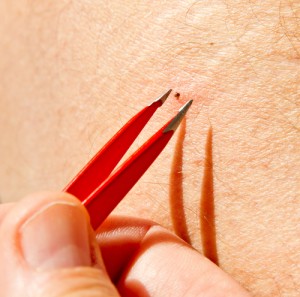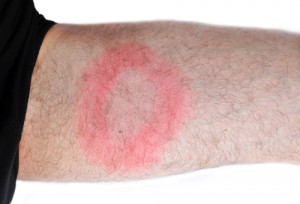Lyme Disease –Know It to Prevent It!
 First a word on the other kind of lime. What’s to happen to my summer if I can’t afford limes for my Corona Light and Margarita? I have no problem with Mexican cartels controlling the price of heroin, but they need to leave my summer drinks out of their wicked ways.
First a word on the other kind of lime. What’s to happen to my summer if I can’t afford limes for my Corona Light and Margarita? I have no problem with Mexican cartels controlling the price of heroin, but they need to leave my summer drinks out of their wicked ways.
 Now, onto a more serious topic — Lyme disease. 80s pop star Debbie Gibson has been in the news lately. Her rapid weight loss started many rumors on social media, to which she answered, “I have Lyme disease, you insensitive idiots.” O.K., she didn’t say the last part, but she did tell people to watch who and what they judge when they don’t have all the information. I am hoping the focus on Gibson and her disease will raise awareness about Lyme, which is preventable and also treatable, when recognized.
Now, onto a more serious topic — Lyme disease. 80s pop star Debbie Gibson has been in the news lately. Her rapid weight loss started many rumors on social media, to which she answered, “I have Lyme disease, you insensitive idiots.” O.K., she didn’t say the last part, but she did tell people to watch who and what they judge when they don’t have all the information. I am hoping the focus on Gibson and her disease will raise awareness about Lyme, which is preventable and also treatable, when recognized.
When my oldest daughter was three, she was not always the most well-behaved child. But, that September, she had a couple weeks much worse than usual. She was whiny, irritable and generally, unbearable. Just when I was looking into boarding schools for toddlers, I noticed a ring-like rash encircling her shoulder while I was giving her a bath. At the same time, I felt joy that she wasn’t simply turning into a little jerk, fear at what I believed the rash to mean and guilt that I hadn’t checked her for ticks after a recent apple picking trip.
Since we were living in Manhattan, where doctors don’t see a whole lot of Lyme, it took me about a week to convince everyone she needed treatment. Three weeks of antibiotics later, she was cured and should have no long term effects.
Had she not gotten the rash, things may have been much different. The key to both prevention and diagnosis of Lyme is to have it on your radar.
Prevention
Be aware of where you and your children are spending outdoor time. If it is an area where deer may inhabit, encourage long pants and consider bug spray.
When you come inside, check for ticks as soon as you can. Look in hard to see places, like the groin and under the arms. If you see a tick, do not panic. Take your time and try to remove the whole tick. It takes about 36 to 48 hours for the tick to transmit the bacteria that causes Lyme. You can save the tick, but most states won’t test it for you anyway. More importantly, if you don’t know when the tick first attached, watch for symptoms and see your doctor if you notice any.
Initial Lyme symptoms resemble the flu. Fever, lethargy, and headache. A bullseye shaped rash (called erythema migraines) will occur in about 70-80% of cases, initially where the bite occurred, but it can spread. It manifests somewhere between 3-30 days after the bite. Some people will go on to have pain and swelling in their joints, palpitations, facial paralysis and meningitic symptoms, including a stiff neck and severe headache. These symptoms will go away, which is why it is so critical to be thinking about Lyme. Blood tests are often unhelpful at this stage.
Treatment for Lyme is about 3 weeks of oral antibiotic therapy. In severe cases, IV therapy may be necessary.
Late Disseminated Stage
60% of patients who are not treated will end up having periodic bouts of arthritis, usually in their large joints.
5% of untreated patients will have neurologic problems including shooting pains and numbness in their hands and feet, confusion and short-term memory loss.
 So, take a lesson from the Only in My Dreams singer. Lyme is very much a reality and can be very dangerous. If you keep it on your radar as we spend more time outdoors, you can prevent a lot of heartache later.
So, take a lesson from the Only in My Dreams singer. Lyme is very much a reality and can be very dangerous. If you keep it on your radar as we spend more time outdoors, you can prevent a lot of heartache later.






















